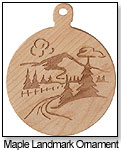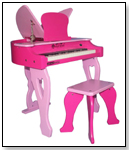|
|
Get Ready for the Holidays Now Give Retailers What They Need, When They Need It
 1. If You Promise It, Fulfill It. Unfulfilled orders can be a big problem for retailers. “It's hard on the company, but it's also really hard on the stores,” said Elizabeth Ryan, owner of Toys and Tales in Los Angeles. “If you're going to hype something, make sure you have enough of it.” 1. If You Promise It, Fulfill It. Unfulfilled orders can be a big problem for retailers. “It's hard on the company, but it's also really hard on the stores,” said Elizabeth Ryan, owner of Toys and Tales in Los Angeles. “If you're going to hype something, make sure you have enough of it.”2. Push Product Early. “If it's something we know is going to be a big item, we try to order it as soon as possible so that we can be sure we'll have it for the holidays,” Terry Angello, manager of The Toy Dept. in Pasadena, Calif., told TDmonthly. Owner Jeff Oslick of The Enchanted Toy Store in Fullerton, Calif., wants to have the bulk of his holiday ordering done by mid-August. Janet Gregory, owner of Over the Rainbow in Anchorage, Alaska, agreed: “Especially considering the increased lag-time in products coming out of China, I have to start planning my holiday orders in early June, and I want to have them all done by the middle of August.”  3. Boost Sales With Advertising. “When [manufacturers] start advertising either online or in parent magazines, that definitely draws people to places like us, especially if they're touting that they're different,” Patti Tepper-Rasmussen, owner of Learning Tree in Oklahoma City told TDmonthly. “Also, if they're willing to link our websites to theirs, that's a big help.” 4. Distinguish Your Company. “Part of our reality is that we are a small, family-owned business,” noted Jamie Kreisman, head of Beka. “We don't need to sell to everyone in the country in order to be happy and be successful. Retailers who choose to carry our products aren't faced with having a dozen competitors in the same town.” 5. Ease Expenses. Dating that allows retailers to place larger, more organized orders and freight deals are more attractive than ever. “We used to place much larger orders earlier in the year,” said Steve Meynig, manager of Tom's Toys in Beverly Hills, who hopes to have most of his holiday orders in no later than the end of September. “But as terms have fallen by the wayside, we've had to place more frequent, smaller orders.”  6. Respond to Retailer Concerns. “[Retailers] are trying to determine how the season is going before they commit to something they might not be able to fulfill,” Kathleen McHugh, president of the American Specialty Toy Retailing Association, told TDmonthly. A solid understanding of these concerns allows manufacturers to tailor their services to retailers’ present needs. 6. Respond to Retailer Concerns. “[Retailers] are trying to determine how the season is going before they commit to something they might not be able to fulfill,” Kathleen McHugh, president of the American Specialty Toy Retailing Association, told TDmonthly. A solid understanding of these concerns allows manufacturers to tailor their services to retailers’ present needs.7. Help Stores Sell. Develop simple materials to highlight the important features of your toys. “We try to be really responsive to sending customers signage and whatever a store needs to help them sell our products,” said Barbara Rainville of Maple Landmark Woodcraft. 8. Offer Good Service. Specialty retailers thrive by giving their customers the best communication and service. Vendors who do the same will outshine the competition. “It's a great market to be in,” Ryan said. “You feel like everyone's trying to work together.”  Writer's Bio: Marie Raven has a long history with the specialty toy industry as a family business. In addition to freelancing for TDmonthly Magazine, she writes creative and technical material for various other businesses. Read more articles by this author Writer's Bio: Marie Raven has a long history with the specialty toy industry as a family business. In addition to freelancing for TDmonthly Magazine, she writes creative and technical material for various other businesses. Read more articles by this author |
| |||||||||||||||||||||||||||||||||
Disclaimer Privacy Policy Career Opportunities
Use of this site constitutes acceptance of our Terms of Use.
© Copyright 2025 PlayZak®, a division of ToyDirectory.com®, Inc.



